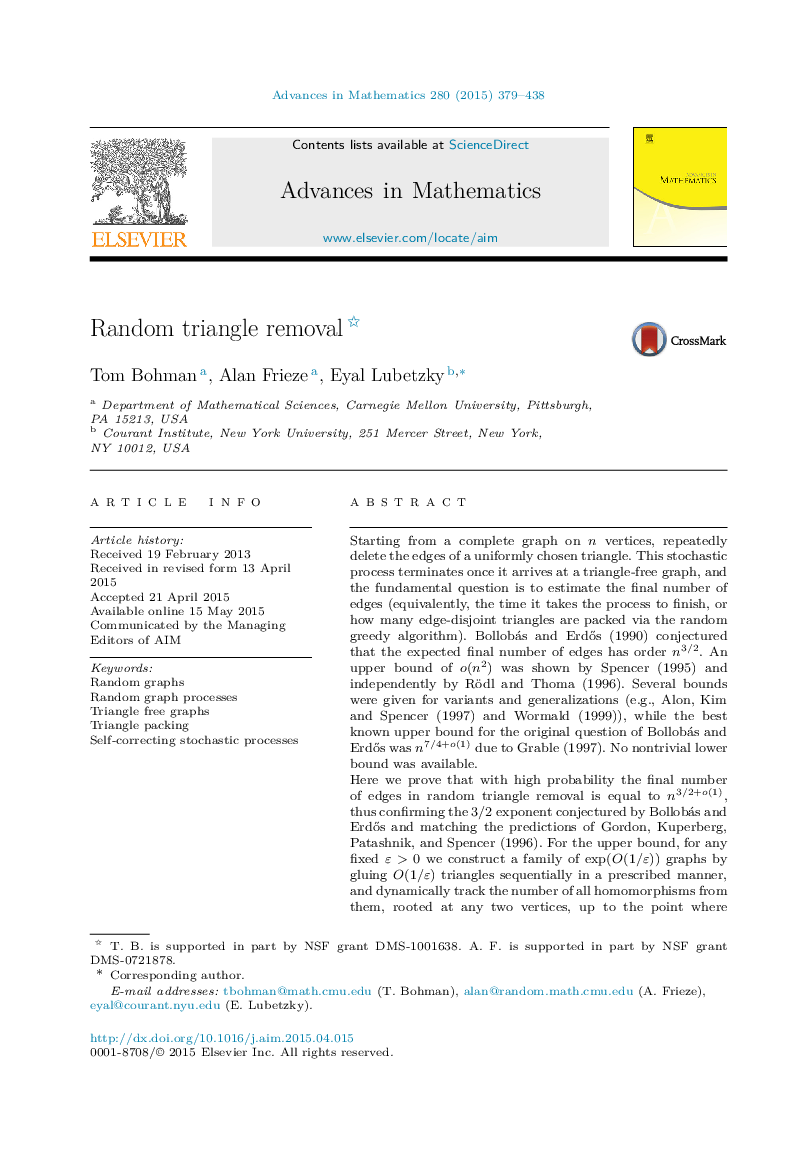| کد مقاله | کد نشریه | سال انتشار | مقاله انگلیسی | نسخه تمام متن |
|---|---|---|---|---|
| 4665289 | 1633808 | 2015 | 60 صفحه PDF | دانلود رایگان |
Starting from a complete graph on n vertices, repeatedly delete the edges of a uniformly chosen triangle. This stochastic process terminates once it arrives at a triangle-free graph, and the fundamental question is to estimate the final number of edges (equivalently, the time it takes the process to finish, or how many edge-disjoint triangles are packed via the random greedy algorithm). Bollobás and Erdős (1990) conjectured that the expected final number of edges has order n3/2n3/2. An upper bound of o(n2)o(n2) was shown by Spencer (1995) and independently by Rödl and Thoma (1996). Several bounds were given for variants and generalizations (e.g., Alon, Kim and Spencer (1997) and Wormald (1999)), while the best known upper bound for the original question of Bollobás and Erdős was n7/4+o(1)n7/4+o(1) due to Grable (1997). No nontrivial lower bound was available.Here we prove that with high probability the final number of edges in random triangle removal is equal to n3/2+o(1)n3/2+o(1), thus confirming the 3/2 exponent conjectured by Bollobás and Erdős and matching the predictions of Gordon, Kuperberg, Patashnik, and Spencer (1996). For the upper bound, for any fixed ε>0ε>0 we construct a family of exp(O(1/ε))exp(O(1/ε)) graphs by gluing O(1/ε)O(1/ε) triangles sequentially in a prescribed manner, and dynamically track the number of all homomorphisms from them, rooted at any two vertices, up to the point where n3/2+εn3/2+ε edges remain. A system of martingales establishes concentration for these random variables around their analogous means in a random graph with corresponding edge density, and a key role is played by the self-correcting nature of the process. The lower bound builds on the estimates at that very point to show that the process will typically terminate with at least n3/2−o(1)n3/2−o(1) edges left.
Journal: Advances in Mathematics - Volume 280, 6 August 2015, Pages 379–438
